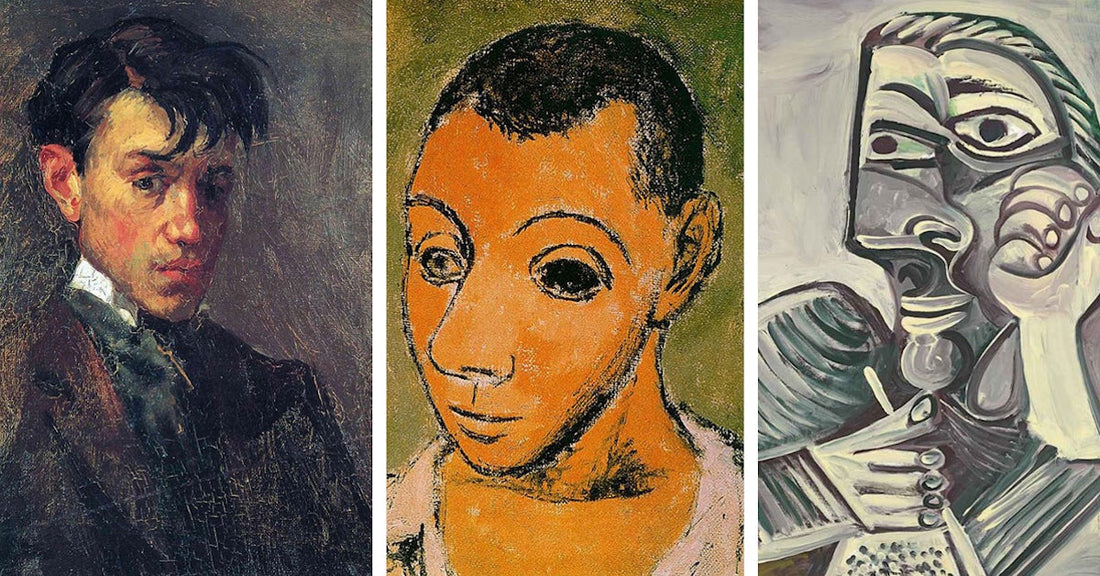Artists Immortalized How We Approached Identity Through Portraits of Themselves and Others
Have you ever looked at a picture of yourself and it didn’t look quite right? Have you ever been taken aback by an unrecognizable photograph of your younger self? No two people will perceive someone the same way, their acquaintances appear in a unique light for everyone they encounter. While this phenomenon is especially common now that humans collectively snap an average of 92 million selfies a day, this off-putting dissonance of self-perception also existed prior to the invention of the camera. As Photoshop is used today to alter a person’s photographic appearance, the artistic liberties of a painter’s brush strokes accomplished the same feat, modifying the likenesses of their subject. At times, artists were known to alter their self-portraits, tweaking their own appearances on the canvas. Understanding this art through a historical and psychological lens helps us understand where the symbolisms within identity lie, especially today.
Classical portrait paintings placed status above all else, highlighting the subject’s prestige and reputation at the expense of their true likeness. Artists often buffed the images of their patrons to elevate and refine their appearance as a function of their power and status. In the classical era, nothing was worse than “losing face.”

Sometimes, aging was considered to be a sign of a deteriorating reputation. This can be observed in portraits of Roman emperors like Augustus Caesar, who was always depicted with youthful skin, muscular shoulders, and sculpted abs. He may have died at 75, but on canvas and marble, he never looked a day older than 25.
Throughout subsequent centuries, members of the aristocracy increasingly sought awe-inspiring portraiture that memorialized their status as those worth remembering. Because these works were commissioned by wealthy subjects themselves, artists would depict an idealized image of their affluent patrons rather than their actual appearance.
Alternatively, when artists depict their own likenesses, noticeably different themes emerge. Often, the faces of these self-portraits appear disgruntled and disfigured. This was especially the case for artists like William Utermohlen. Through his pieces, his progressively worsening mental state is clearly evident in each consecutive self-portrait. His face slowly becomes more abstract, and his warm smile vanishes. These self-portraits can be some of the most heartbreaking pieces to view—one can see the artist’s grip on reality loosen with time.


Utermohlen was best known for his self portrait series developed shortly after being diagnosed with Alzheimer’s disease. His Conversations series is considered to be the last of his lucid works, though the beginning symptoms of his condition peek through the work.
In 2000, Utermohlen painted his last recognizable self-portrait. The portrait appears as though the remnants of his face are slipping away—his only visible features are his extreme remorse and sadness as the last flakes of his identity float out of reach
While some artists depict their deteriorating condition, others find creative inspiration in their chronic diseases. Prosopagnosia is a neurological disorder that causes a person to be unable to recognize faces or physical features in individual people. Also known as facial blindness and facial agnosia, people who suffer from this condition often cannot draw connections between a person’s facial features and who they really are. In some cases, artists who suffer from facial blindness are known for painting portraits in such photorealistic detail that they appear clearer than photos. Chuck Close was able to depict facial features in this way. He suffered from paralysis, facial blindness, and dyslexia. He painted in such photorealistic detail that his paintings cannot be compared to a photograph—the subject appears standing before the viewer, gazing into their eyes.

Throughout history, portrait artists altered their subjects’ identities, sparking conversations on what it means to be remembered. Today, in self-portraiture, creators reclaim their psychological conditions such as facial blindness to enhance their work. This exemplifies how contemporary artists represent their condition and elevate their art based on their unique perspectives. Taken together, these moving portraits evoke existential questions within viewers today, and call us to consider how depictions of our appearances will be perceived.
©ArtRKL™️ LLC 2021-2023. All rights reserved. This material may not be published, broadcast, rewritten or redistributed. ArtRKL™️ and its underscore design indicate trademarks of ArtRKL™️ LLC and its subsidiaries.





